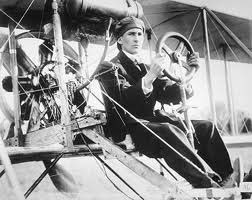
They were perhaps the quickest 90 seconds in Canada’s history.
On a frozen bay, near the Nova Scotia community of Baddeck – about midday on Feb. 23, 1909 – a group of avid young scientists and engineers gathered, they hoped, to make history. Under the direction of perhaps Canada’s greatest inventor, Alexander Graham Bell, the men fired up a small engine attached to a Bell-designed glider. J.A.D. McCurdy, the son of Bell’s secretary, climbed into the open cockpit, eased the throttle powering the propeller and guided Bell’s “Silver Dart” across the ice at increasing speed. Then, in front nearly 150 witnesses, the flying machine left the ice surface and remained airborne for perhaps a minute and a half.
“Canada’s first heavier-than-air machine,” reports said, had been flown by “the bold aeronaut Douglas McCurdy, a Baddeck boy born and bred.”
That was a hundred years ago next Monday. Since then, Canada’s love affair with flight has not waned. Consider such aviation milestones as the mass production of Fleet Finch biplanes at Fort Erie, Ont.; the British Commonwealth Air Training Plan in the Second World War; the test flight of the world’s first jet fighter, the Avro Arrow; the development of Snowbird aerobatic team, not to mention such space-age innovations as remote sensing and Canadarm. They didn’t get the attention of Orville and Wilbur’s “Wright Flyer” in 1903, but Canada’s aviation pioneers nevertheless lifted a young nation into the age of flight.
And the aviation bug has affected our community too. Most recently, Uxbridge and area witnessed such touchstone moments as Micky Jovkovic’s singular efforts in making the Greenbank airport a small-town flying hub in central Ontario. In 2007, one of Uxbridge’s own – Captain Jack Wesselo – made the landing and display of his Gryphon military helicopter a highlight of the year. Today he serves Canadian Forces in the skies over Afghanistan.
What has always amazed me, as I’ve studied this century-long Canadian love affair with flying, is the romance of it all. While McCurdy and the Silver Dart flew over a wintry scene in Nova Scotia, it was the heroes and heroines of the 1920s and ’30s who drew spectators and reporters by the score to witness and record the wonder of it all. Of course, Charles Lindbergh, Amelia Earhart, Wiley Post and countless others on their quests to fly non-stop across the globe, captured most attention. But there was also the British dirigible R100 that floated majestically from Ottawa over small-town Ontario to Toronto in 1930, the Ontario flypast of seaplanes piloted by General Italo Balbo to celebrate Italian aviation prowess in 1933, and the Royal Air Force demonstration team of Hawker Furies hop-scotching across Ontario in 1934.
“Five silver aeroplanes came zooming out of the sun,” said an old friend of mine who witnessed the RAF fighters. “Then swoosh…they were gone. But I never forgot it.”
Among the strangest aviation tales associated with our community, involved a group of New Zealand pilot trainees who befriended Pearl Webster and her two daughters – Marjorie and Helen – during the Second World War. Because of their eagerness to help the war effort, the Webster farm family regularly invited the Kiwi cadets to spend weekends on leave enjoying country air and home cooking away from their pilot instruction at Dunnville, Ont.
To acknowledge the Websters’ goodwill, one afternoon in 1944, one of the young pilots – Noel Wood – offered an impromptu aerobatics demonstration over the Webster farm house with his Harvard trainer. Something went amiss. Wood miscalculated and crashed up the hill behind the barn off Reach Street.
“Someone got a truck, put a mattress in it to lay him on, because there was no ambulance in those days,” Helen Webster (Barnett) told me. “We took him to Dr. Wilson’s place, but his head was badly injured,” and he died in surgery that afternoon.
There were many in this town smitten by that romantic era of flying. Not the least of them was former CBC broadcaster Cliff Robb. Trained as a ground crewman – also during the war – he worked around the clock in France maintaining Spitfires and Hurricanes as Allied airmen pressed inland after D-Day. Sometimes referred to as “penguins,” because they were airmen who didn’t actually fly, ground crew dedicated themselves to the science of flying the same way pilots or navigators did.
“We were the men behind the men behind the guns,” Robb said. “But we loved the kites” as much as any man in the cockpit.
They proved – then as now – that attraction to fly is as Canadian as any earthly pursuit.